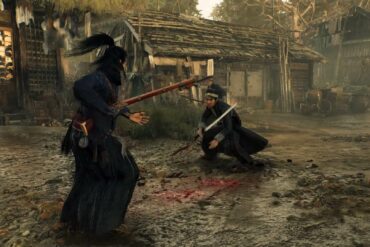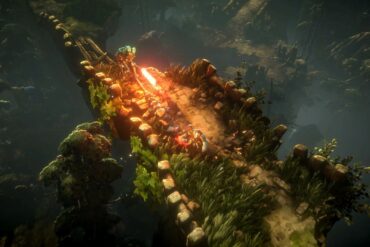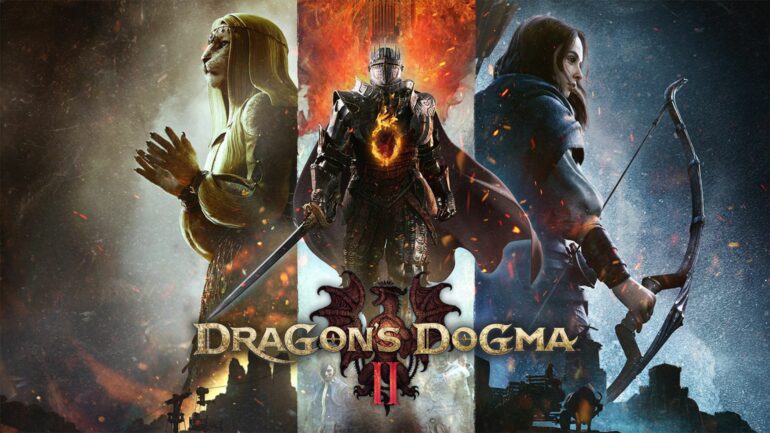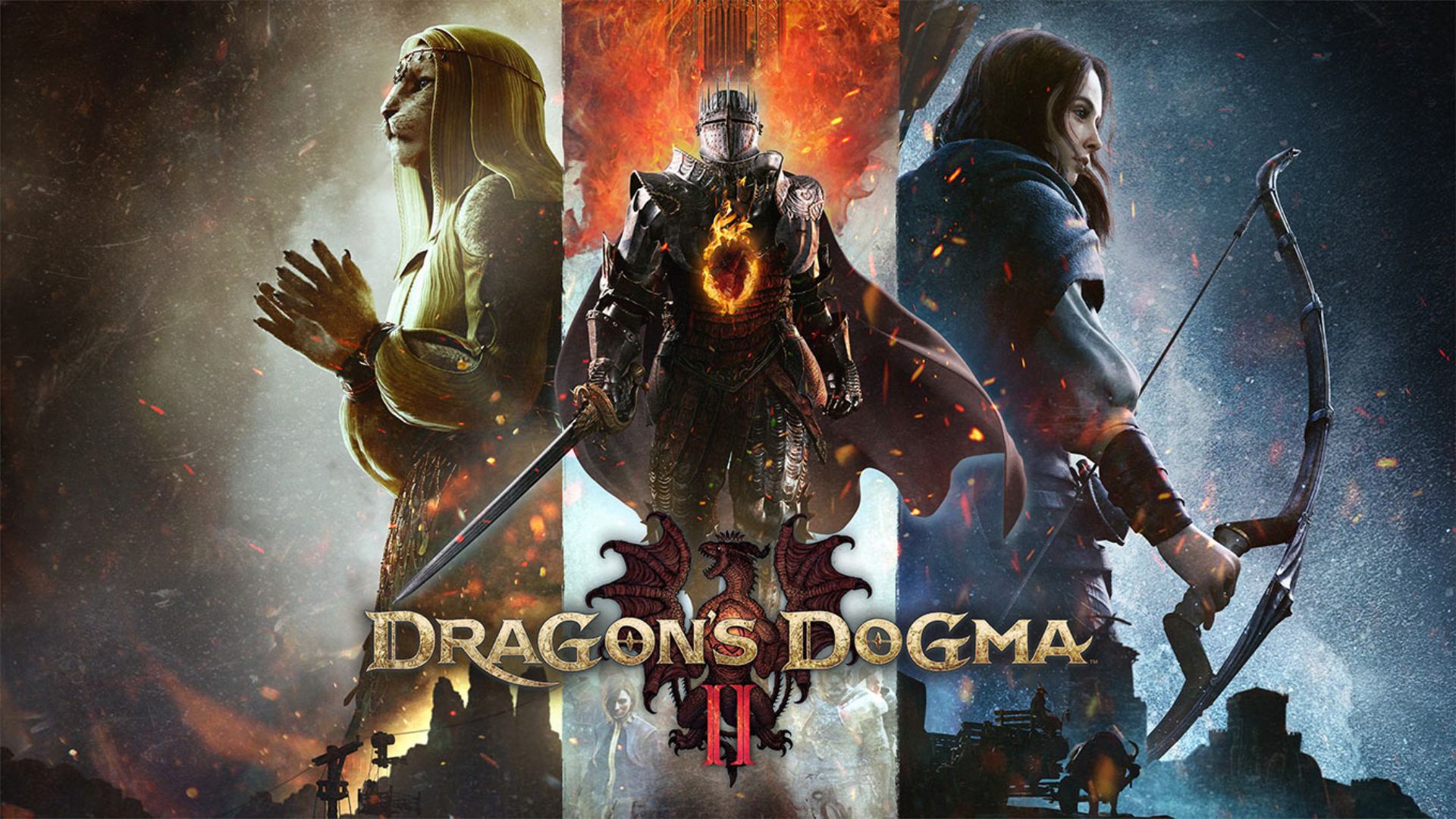Adventure is hard to define. Sure, it has its literal definition, but the feeling of adventure, that grandiose, heart-thumping, smile-widening feeling of setting out to see untold wonders, explore a vast world filled with potential, and come home the victor, spoils in hand, that is hard to define. Media across the ages has done a pretty good job of encapsulating it. For me, the Dragon Quest Overture epitomizes adventure in music form; Peter Jackson’s Lord of the Rings trilogy nailed it in cinematic form, and, until recently, Breath of the Wild had made that delightful, abstract feeling a reality in video game form. That was until I began playing Dragon’s Dogma 2, a game so teeming with potential, so earnest in its portrayal of an utterly fantastical fantasy world, and so beautifully immersive that it feels like I have finally discovered the purest feeling of adventure for the first time.
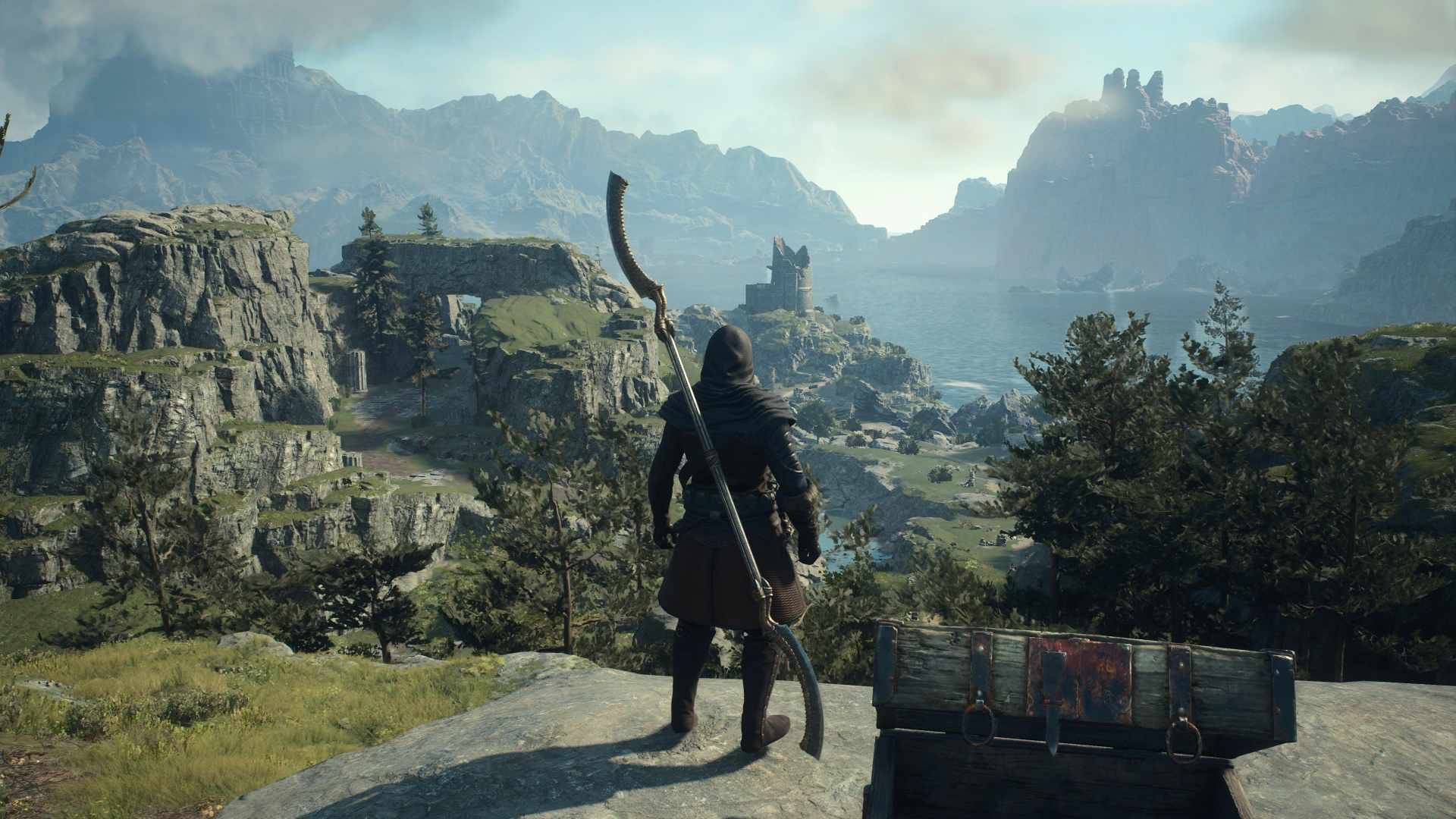
“Much of the narrative’s shortcomings are due to its writing, which is frankly awful.”
Dragon’s Dogma 2’s story is a somewhat mixed affair. It sees you, the true Arisen, attempt to overthrow the false Arisen that has taken the throne of Vermund in your place. In theory, its premise is intriguing, with the potential to offer an almost Game of Thrones-esque sweeping narrative. However, in practice, it never amounts to the captivating possibilities it promises. That’s not to say that it’s truly awful, far from it. Rather, the game’s narrative, much like its predecessor, takes a firm backseat to the adventuring you’ll undertake across this 40 to potentially 100-hour adventure.
Much of the narrative’s shortcomings are due to its writing, which is frankly awful. This is, in large part, a result of the ol’ timey medieval English that is used to a perpetually infuriating degree. If you find naught wrong with the word naught, then you’ll likely enjoy much of the flowery, verbose language used in Dragon’s Dogma 2. Unfortunately, I found it muddied much of what the game had to say in a way that was never particularly compelling. This fault seeps into all aspects of Dragon’s Dogma 2’s storytelling, including the banter between you and your companions. It’s an unceasingly frustrating aspect but easily overlooked as very little of your experience will be spent conversing with others.
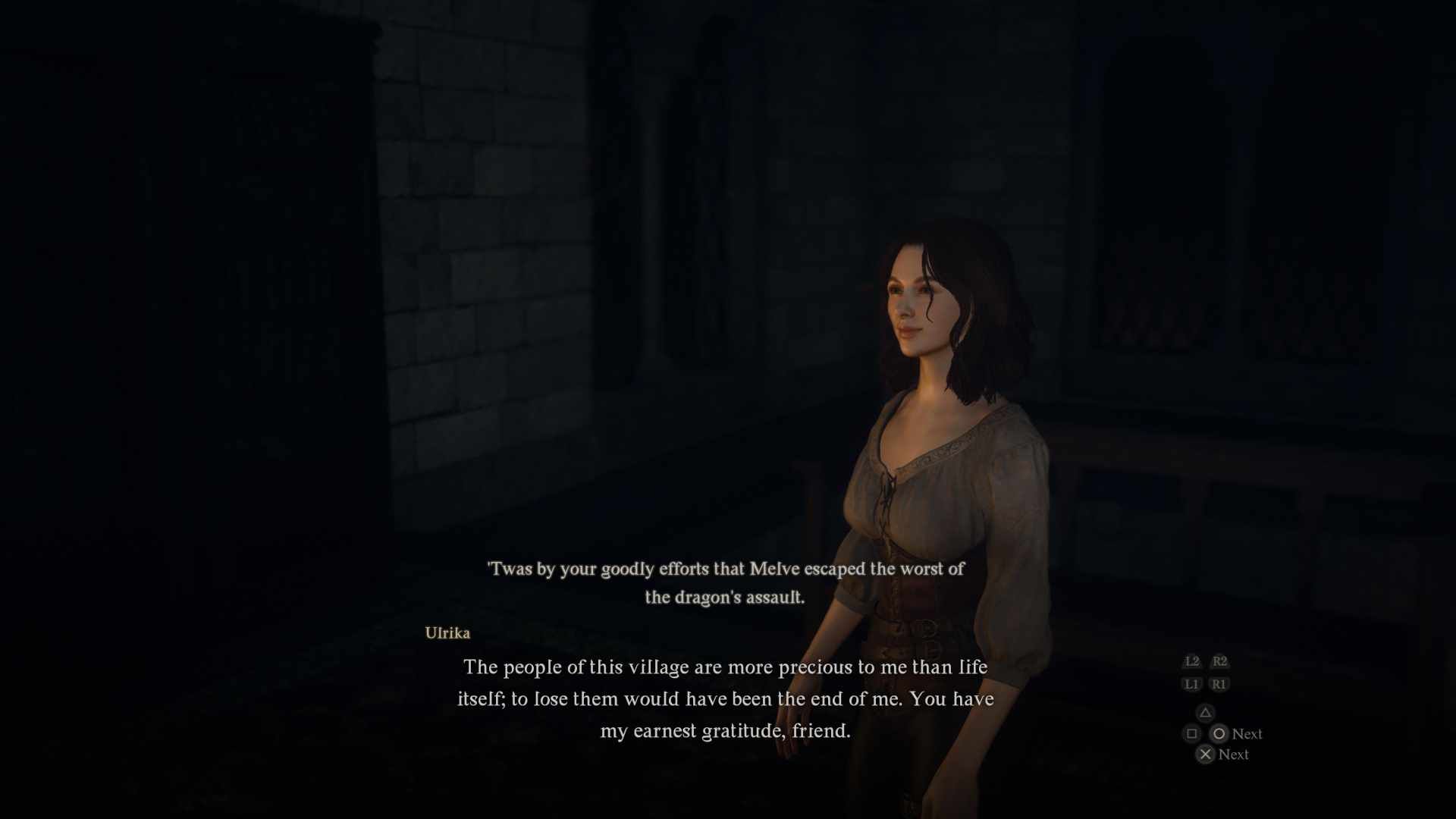
“I can’t recommend Dragon’s Dogma 2 for its main story alone, but then I’d probably say the same about Skyrim.”
What time you do spend engaging with the story is certainly far more than serviceable. This is, after all, not a mundane narrative filled with dull missions but rather a collection of diverse mission objectives with a lot of passion and creativity behind them. You’ll go from surviving a terrifying ambush from a towering cyclops as water cascades around you to sneaking around a castle before making a daring escape across the rooftops.
The blame lies not with the mission structure nor even a lack of ambition with the overarching narrative, which does result in some terrifically explosive climatic moments. Rather, it’s the lackadaisical way in which so much of it is presented, with little effort going into cutscenes or direction. It feels largely forgettable, especially when stretched out across the hour-long excursions you’ll embark upon while exploring the enticing and richly detailed open world.
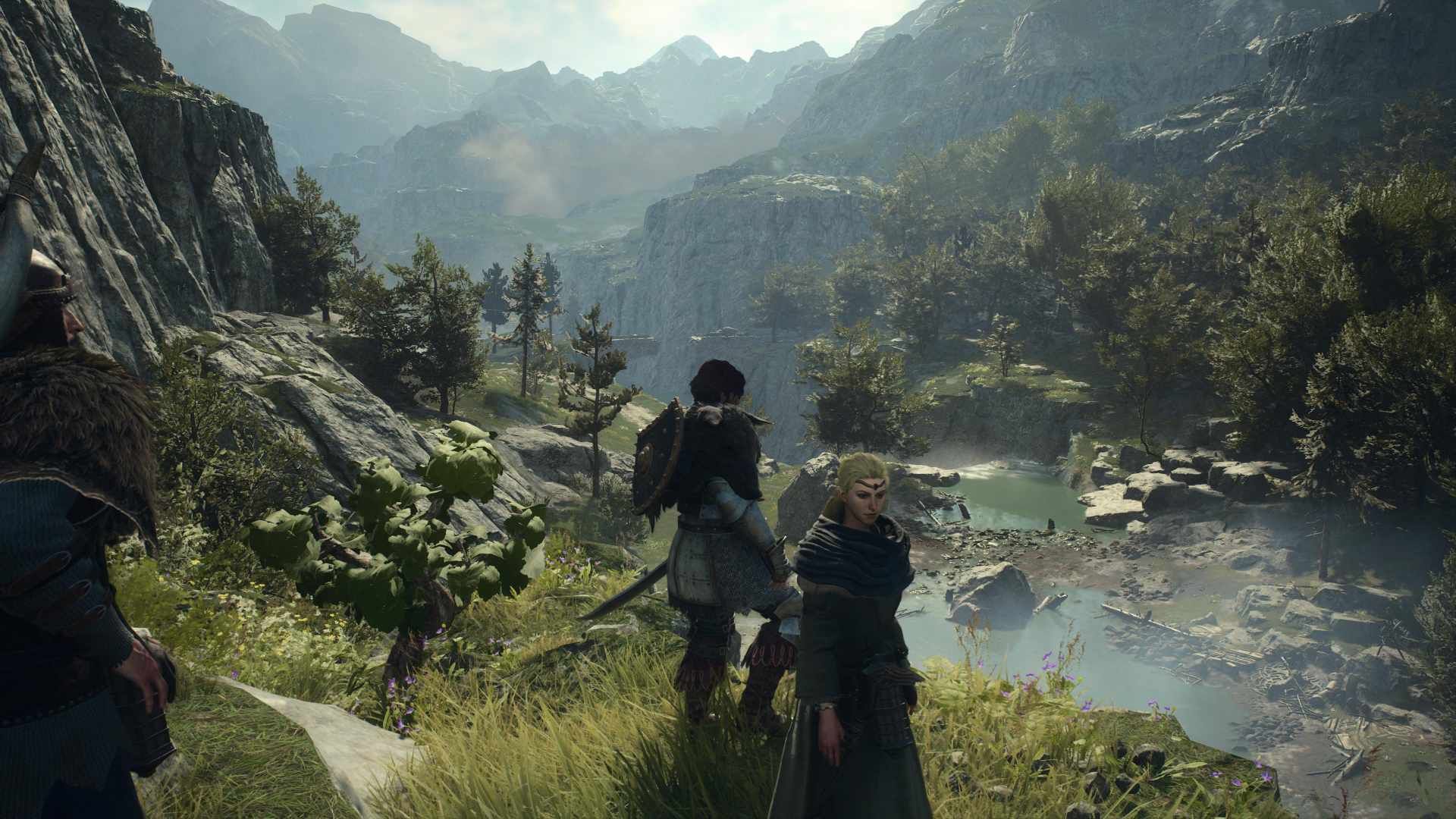
Suffice it to say, you’re not playing Dragon’s Dogma 2 for its narrative, no matter how much more effort has gone into improving its overall sense of import in the sequel. You shouldn’t go in expecting a level of emotion inherent in JRPGs, nor the phenomenal writing of some of Sony’s more narrative-driven experiences. This is, by all accounts, an immensely enjoyable yet largely forgettable narrative, the likes of which I suspect many have come to expect from RPGs not developed by Larian Studios. So, no, I can’t recommend Dragon’s Dogma 2 for its main story alone. However, I’d probably say the same about Skyrim or even Tears of the Kingdom.
“It’s great worldbuilding that rivals the greats and makes the world of Dragon’s Dogma 2 such a memorable and phenomenal place to exist within.”
Fortunately, it’s fair to say that the game’s worldbuilding more than surpasses the confines of its more limited narrative, offering an enticing and expansive world that feels as if it existed long before you booted it up. It’s clear that a lot of effort has gone into making each kingdom feel entirely distinct, whether it is the brief conversations between the plethora of NPCs that populate each land or the richly detailed context woven into practically every encounter and quest.
You’ll hear stories of the Dragonsplague, a rare disease that can infect your Pawns as they venture off to help other players, or the vastly intricate and delicate tensions between the Beastren and Humans. It’s a fascinating world to behold, one so expertly crafted as to feel remarkably believable despite its affinity for Minotaurs and Chimeras.
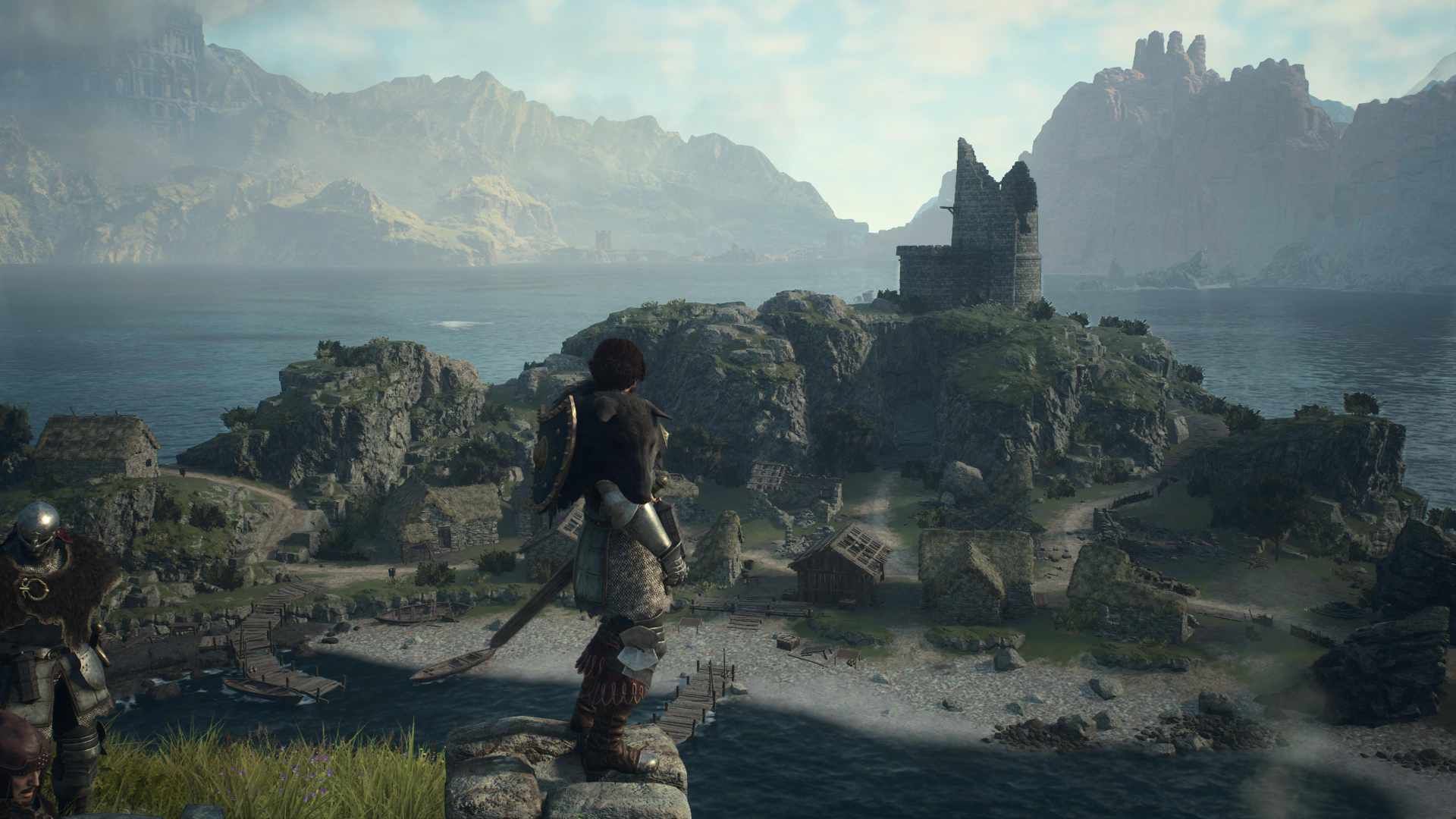
None of this is spoonfed to you in a way that makes it feel as if all of this information, these cultures, relationships, mythologies, and more existed the second you entered the picture. Rather, you’ll learn it all through questing and exploring, through context clues both subtle and passionately blunt. It’s amazing worldbuilding that rivals the greats and makes the world of Dragon’s Dogma 2 such a memorable and phenomenal place to exist within.
“Dragon’s Dogma 2’s side quests help flesh out the intriguing world while offering meaningful experiences to work towards.”
Luckily, the multitude of side quests through which this mesmerizing worldbuilding is delivered are worth your time. There are numerous quests scattered seamlessly across the open world and major hub areas. There is a satisfying synchronicity between exploration and side quests, as you naturally find yourself stumbling upon merchants in need of safeguarding or a captain in dire need of soldiers to train. This is, arguably, the best way of delivering side quests, as while for completionists, it may occasionally necessitate the use of guides to ensure you don’t miss anything, it ensures a truly immersive experience that rewards your curiosity.
I won’t wax lyrically about these side quests as if their narratives are groundbreaking. There are a few particularly memorable quests, such as Ulrika’s rebellious quest to slay a dragon and one concerning an ornate box. Rarely, though, do they extend beyond what has been seen in other high-fantasy experiences.
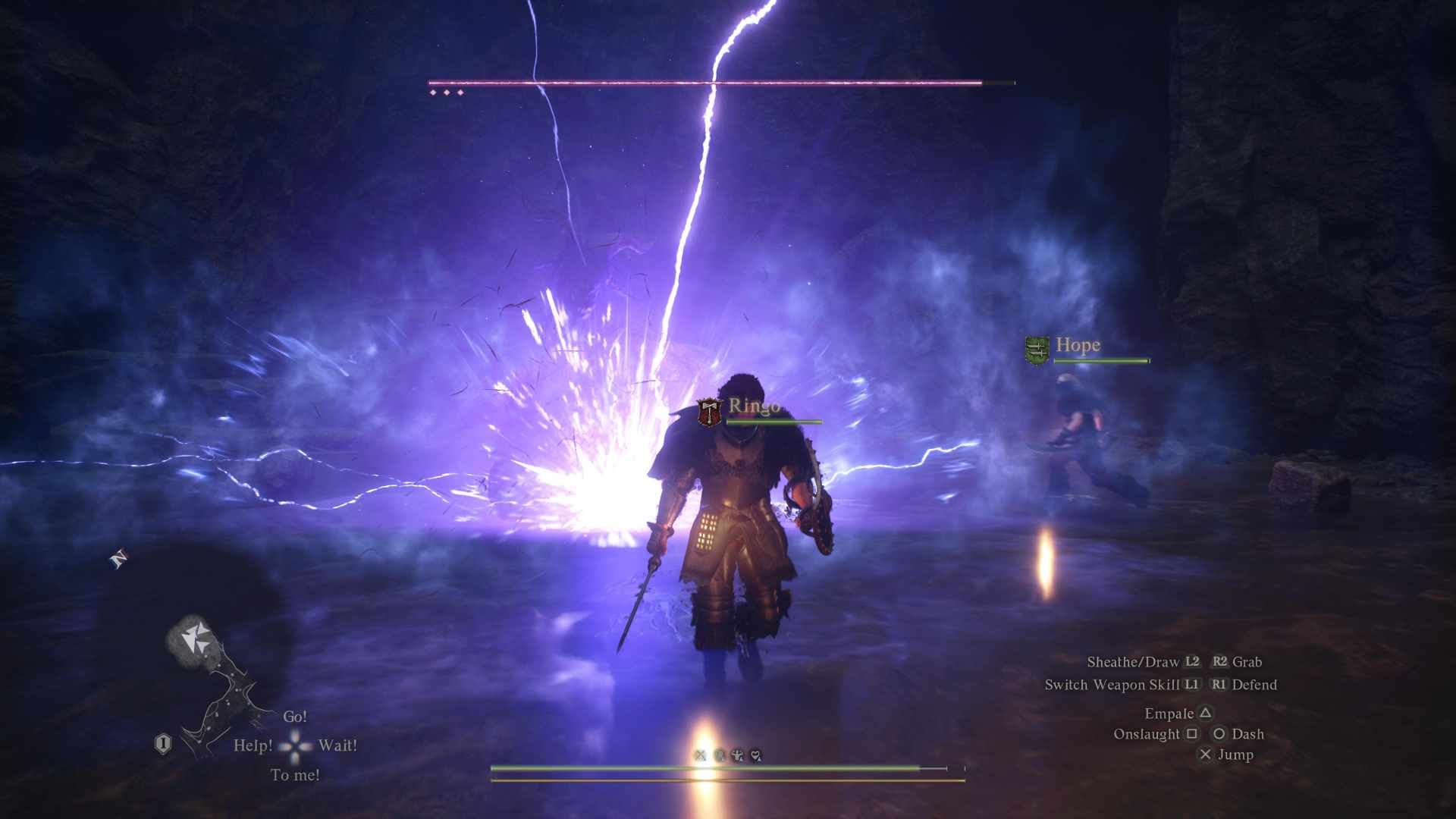
Fortunately, they help flesh out the game’s intriguing world while offering meaningful experiences to work toward. Furthermore, they’ll often encourage you to revisit locations you’ve already been to, ensuring that you don’t miss out on new quests that may spring up in your absence. It is true that, a little too often perhaps, they can be obtuse, owing to their occasional lack of directions or objectives. However, I found them to be mostly intriguing affairs and worthwhile endeavors.
Mercifully, Pawns alleviate much of the tedium that could spawn from mindlessly searching for quest solutions. Most Pawns you’ll stumble across will know the location of quest objectives and will gladly lead you there if you allow them. It’s a novel system, one that relinquishes the stresses of figuring out the game’s complexities if you feel overwhelmed but doesn’t strictly interfere with the overall sense of freeform adventure.
“At one point, after delivering someone to safety, I looked back to see my Pawn fly across the rooftops as the Cyclops flung him from its back.”
However, by far, the crown jewel of Dragon’s Dogma 2’s experience is exploration. It’s not an exaggeration to say that the original Dragon’s Dogma almost perfected the open-world formula long before BotW or Elden Ring entered the fray. Fortunately, its sequel only cements this legacy as a trailblazer, for its groundbreaking exploration is an exceptional delight, an exercise in emergent gameplay so unique and exciting you’d hardly believe you were playing a video game.
For example, after heading back to the city of Vernworth, I suddenly heard cries and screams. Lo and behold, a Cyclops had made its way into the city. I, alongside my Pawns, jumped into battle, my main Pawn Ringo clambering on the back of the Cyclops, hacking away at its spine. Meanwhile, my other two Pawns, Hope and Cass, desperately attempted to prevent it from venturing further into the city. I scrambled, hoisting civilians on my back and tossing them out of harm’s way. At one point, after delivering someone to safety, I looked back to see Ringo fly across the rooftops as the Cyclops flung him from its back. Fortunately, after much strife, we toppled our foe and cheered triumphantly.
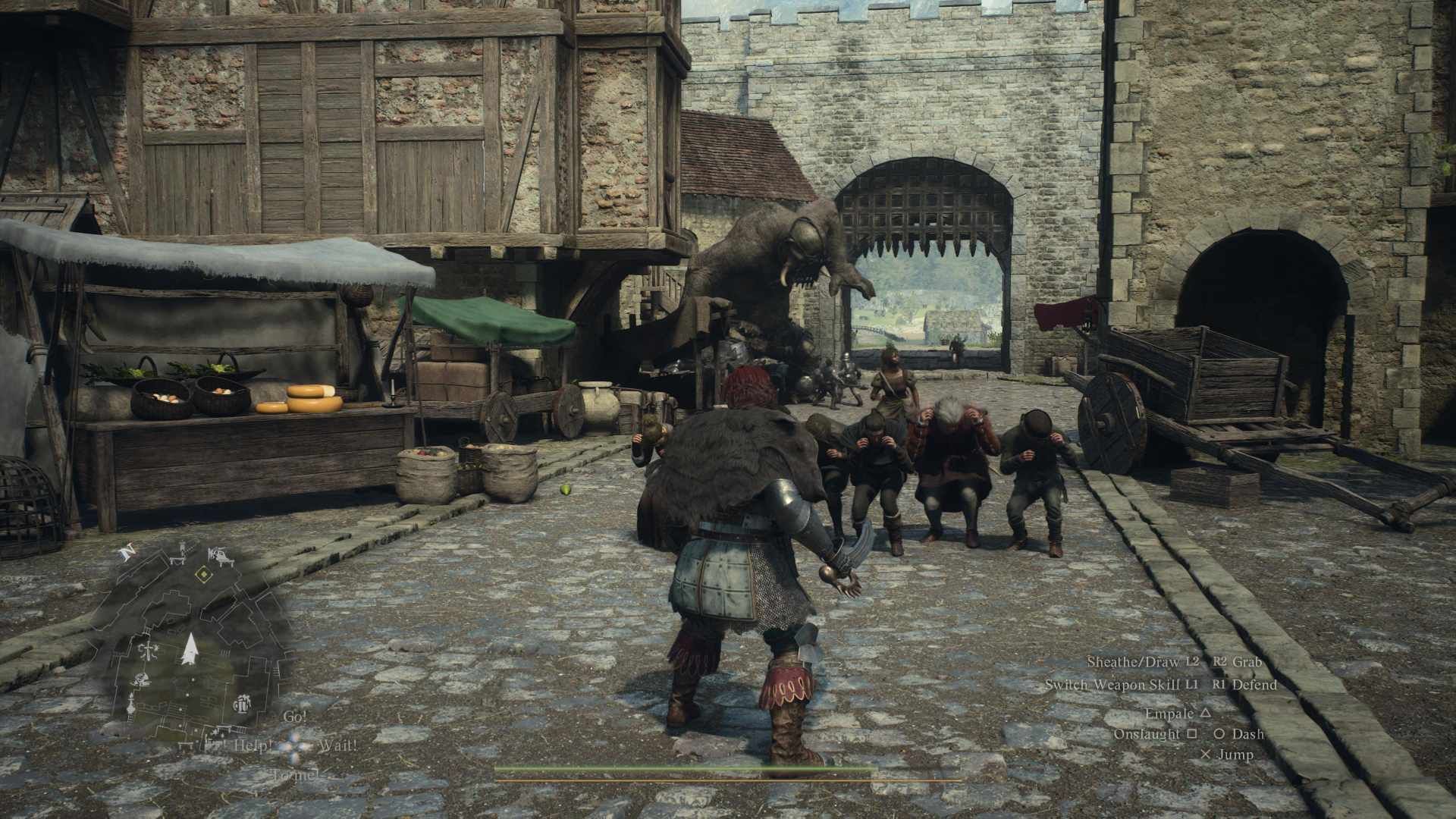
That alone would have been a great story, as I had hardly expected a hulking mini-boss to enter the city. However, shortly after this experience, I left Vernworth to head to Melve. I hopped on the Oxcart, one of the game’s limited forms of fast travel, and watched as it slowly passed by the rolling wheat fields. After a brief sojourn, we came across a Troll. I hopped out, but mere seconds later, a Griffon swooped in, crushing the cart beneath it. Excitedly, I rushed in to help the guard as they fended off not just a Troll but a Griffon, too.
“The stories you make along the way are what makes Dragon’s Dogma 2 such an exceptional work of art.”
Frankly, I could easily recount more strange happenings, epic encounters, and deadly dungeon excursions. These were but two examples of gameplay that happened not because it was scripted but because the game lets you play around with its sandbox in such a freeform way that it feels as if anything could happen. The vastness of its world, coupled with its myriad of interactable objects, allows you to tackle any encounter in dynamic and varied ways. It’s no exaggeration to say that no two playthroughs will feel the same. The stories you make along the way are what makes Dragon’s Dogma 2 such an exceptional work of art.
In less abstract terms, Dragon’s Dogma 2’s world is four times the size of the original, and this sense of scale is not wasted. Almost every inch of it has something for you to do, whether it’s an enemy encounter, resources to gather, or a cave to explore. Naturally, this can, at first, feel a little overwhelming. However, Dragon’s Dogma 2’s world has been crafted in such a way that while it feels like an open world, it is really just a series of interconnected linear paths with offshoots branching from them.
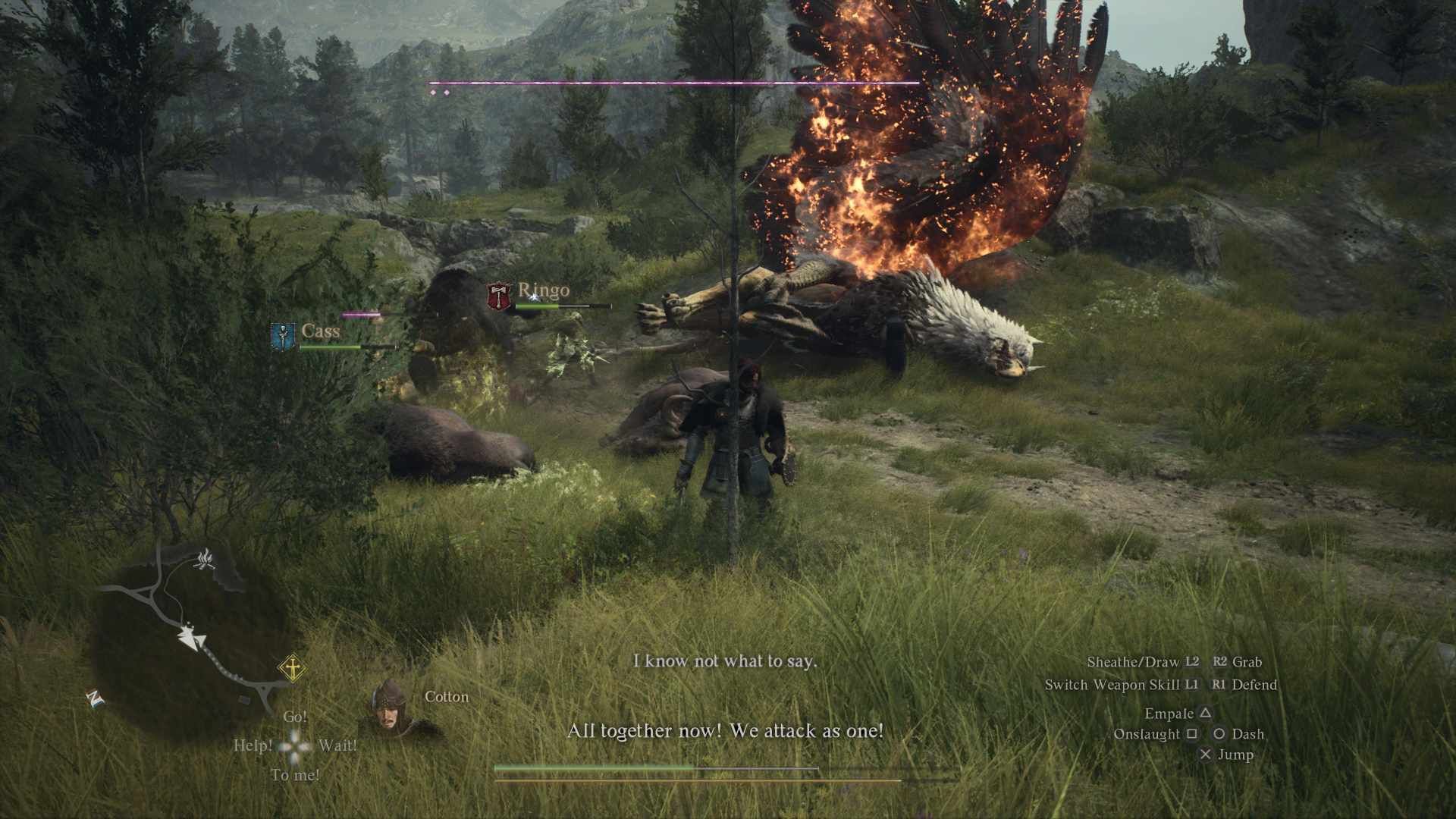
This may sound like a negative, but in practice, it makes for a remarkable open-world experience. You get the familiarity and density associated with the Yakuza series coupled with the sense of scale and activities from a Ubisoft game. This marrying of design philosophies makes for a very focused experience that feels endlessly rewarding. You’ll quickly familiarize yourself with the open world, each distinctive landmark etched into your mind, guiding you to the next safe location. Yet, you’ll also consistently find yourself amazed by the delightful surprises in store for you if you venture off the beaten path.
“Dragon’s Dogma 2 does offer a surprising number of unique lines for your Pawns to natter.”
As aforementioned, Dragon’s Dogma 2’s world genuinely feels alive. This is largely owed to the fact that it’s populated by wandering Pawns and NPCs, who you’ll often find engaged in their own battles or who may happen upon yours and rush to your aid when you need it the most. It makes exploration that much more dynamic, as the feeling that everything is in motion regardless of your actions is endlessly engrossing. The number of times that my Pawns and I joined a party of six or so other fighters to take down a Minotaur transformed the game, if but for a moment, into an epic MMO.
Even when you’re not encountering other Pawns, your own group will do a good job of reminding you you’re not alone. The Pawn banter in the previous Dragon’s Dogma game was entertaining, albeit slightly repetitive. My ancient brain can’t quite recall how quickly it began repeating itself, but Dragon’s Dogma 2 does offer a surprising number of unique lines for your Pawns to natter. It will inevitably grow repetitive and, in moments, frustratingly so. Fortunately, it’s not so grating, largely thanks to the variety of voices delivering said lines.
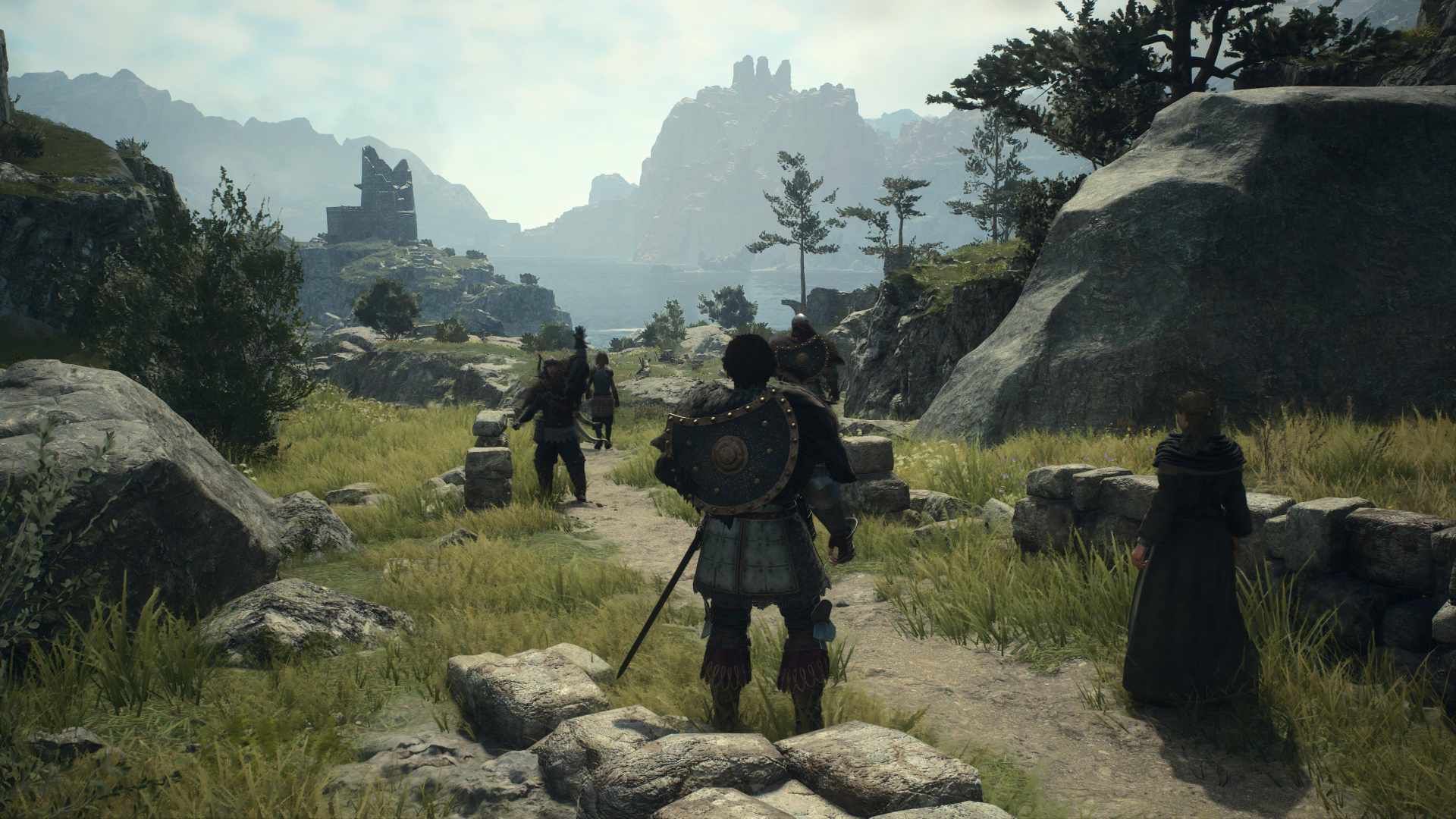
“I derived a lot of enjoyment simply traveling back and forth between locations, if only because of the simple pleasure of discovering things I had missed the first time around.”
Perhaps the most divisive aspect of Dragon’s Dogma 2’s exploration is its lack of accessible fast travel. There are only three main ways to fast travel, all of which require you to physically get yourself to a certain location before you can do them. The Ox Cart, for example, allows you to go from one city to another, although the fact that it can be ambushed and destroyed mid-journey does mean that you’re more often than not traveling by foot anyway.
This is, in my opinion, all part of the fun, and I derived a lot of enjoyment simply traveling back and forth between locations, if only because of the simple pleasure of discovering things I had missed the first time around. However, I can completely understand the rather reasonable complaints that Dragon’s Dogma 2’s lack of fast travel results in a rather arduous amount of backtracking. This issue is perhaps exacerbated by the fact that I found myself practically over-encumbered the majority of the time, and as sprinting requires so much stamina, the majority of movement is reduced to a slow crawl.
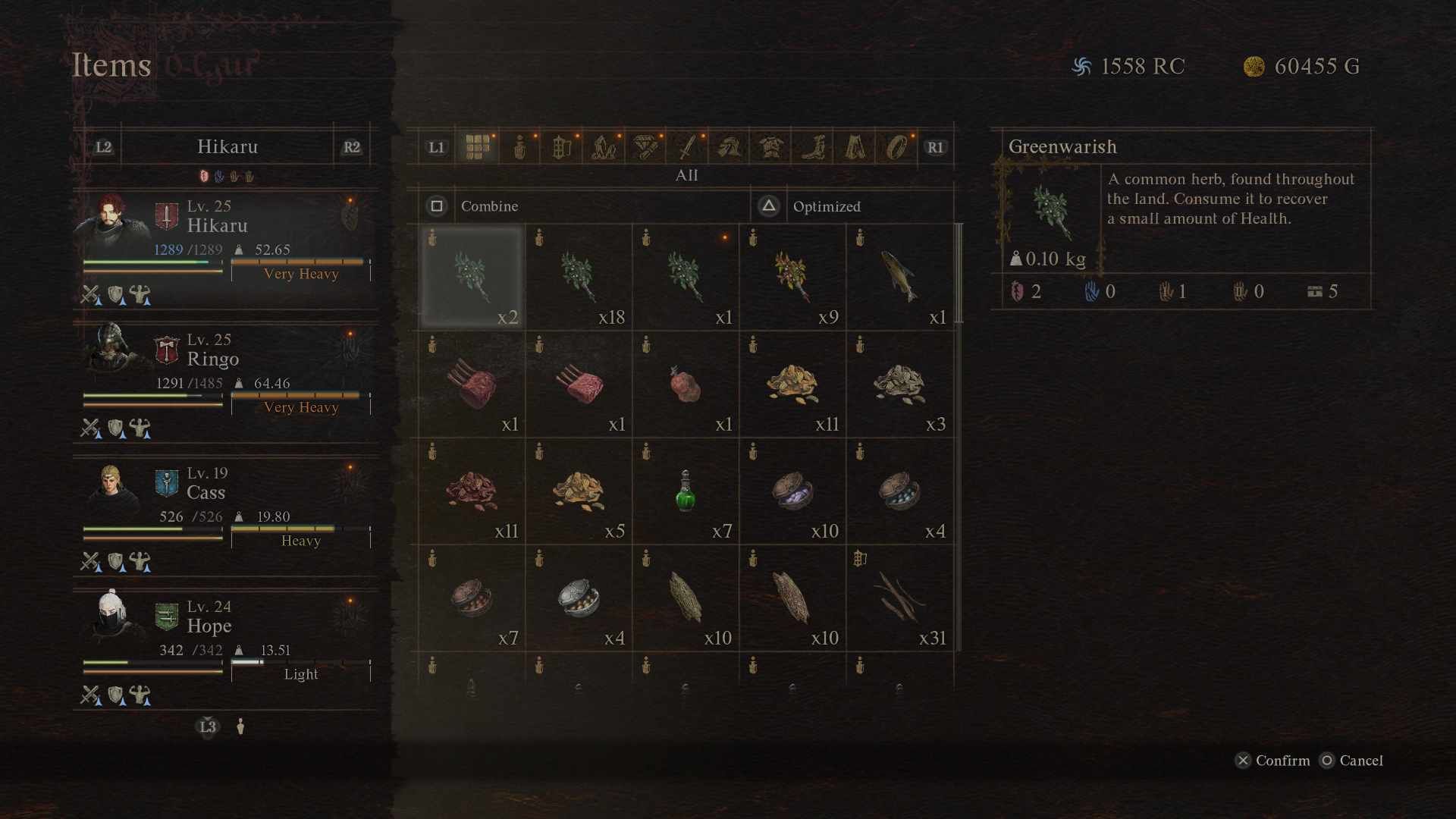
Naturally, there are ways of increasing your weight limit, and you can send items to your other Pawns. However, there was simply always a time when I found myself overloaded with crucial resources and equipment I couldn’t imagine parting with. Fortunately, this is but a small gripe and, in my opinion, one hardly worth considering, especially if you find the exploration as exhilarating and rewarding as I did.
“Pawns are surprisingly adept at combat and feel, at least in combat, like real players.”
Perhaps the aspect I was most surprised by was Dragon’s Dogma 2’s combat. It is deeply versatile owing to its vast array of customizable Vocations. These ostensibly act as classes each with their own unique playstyles and weapon skills. For example, the Fighter is a fairly basic Warrior-esque Vocation, which sees you use an array of sword-based techniques to get the upper hand. Conversely, the Mage is a drastically different kettle of fish, as its need to charge spells makes it vulnerable to attacks, thus requiring a mastery of both timing and use of the game’s dash button.
These are but two of the ten Vocations available at launch, each more progressively complex than the last. The Mystic Spearhand, for example, combines both magic and offensive skills to create a support-offensive hybrid that’s engrossing to play. This then calls for intense scrutiny of your party composition, as you can end up being wiped if you lack the necessary tank to absorb all of the blows or Mage to heal your party when things are getting tough.
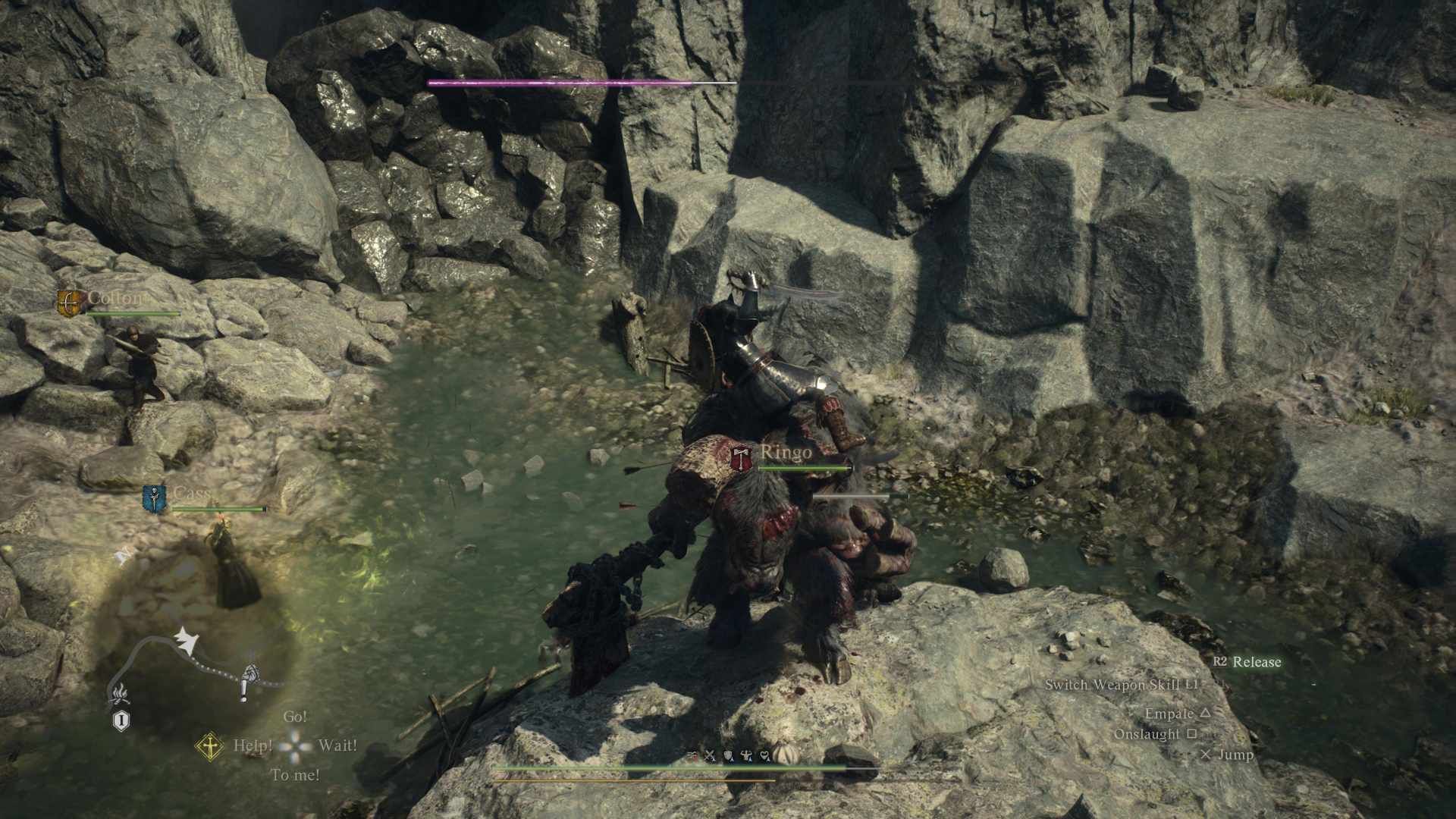
Fortunately, the Pawns are surprisingly adept at combat, to such a startling degree that they were practically carrying me through some of the earlier fights. They play, at least in combat, like real players, adding not just to the immersion but the sense that you can really play as any class. Support classes are just as viable as offensive ones, as you can rely on your Pawns to defend you if you are ever overwhelmed.
“There’s a weight to combat, unlike other RPGs, which, when coupled with the limited stamina system, makes every attack feel all the more meaningful.”
However, the best aspect of the Vocations is the ability to switch at any point. You’re never tied to any Vocation, as all you need to do is head to an Inn and pay the small cost to switch. You’ll even get a free set of armor and weapon to get you started. The lack of penalty for switching ensures that if one playstyle is boring, there’s really no need to stick with it. However, should you remain as your chosen Vocation, you’ll gradually level it up, unlocking new skills and, more importantly, Augments. These are passive buffs that can be carried over to other classes, making experimenting with every class worthwhile.
Combat itself is incredibly entertaining, not least because of the vast and varied Vocation system. Mechanically, it feels phenomenal, with each blow feeling impactful. You’ll leave gaping wounds on your foes as you slash into them or see your spells affect the environment around you. There’s a weight to combat, which, when coupled with the stamina system, makes every attack feel all the more meaningful. You won’t be mindlessly hacking and slashing. Rather, you’ll find yourself eagerly monitoring your stamina system as you try your best to overwhelm your opponent with your various skills.
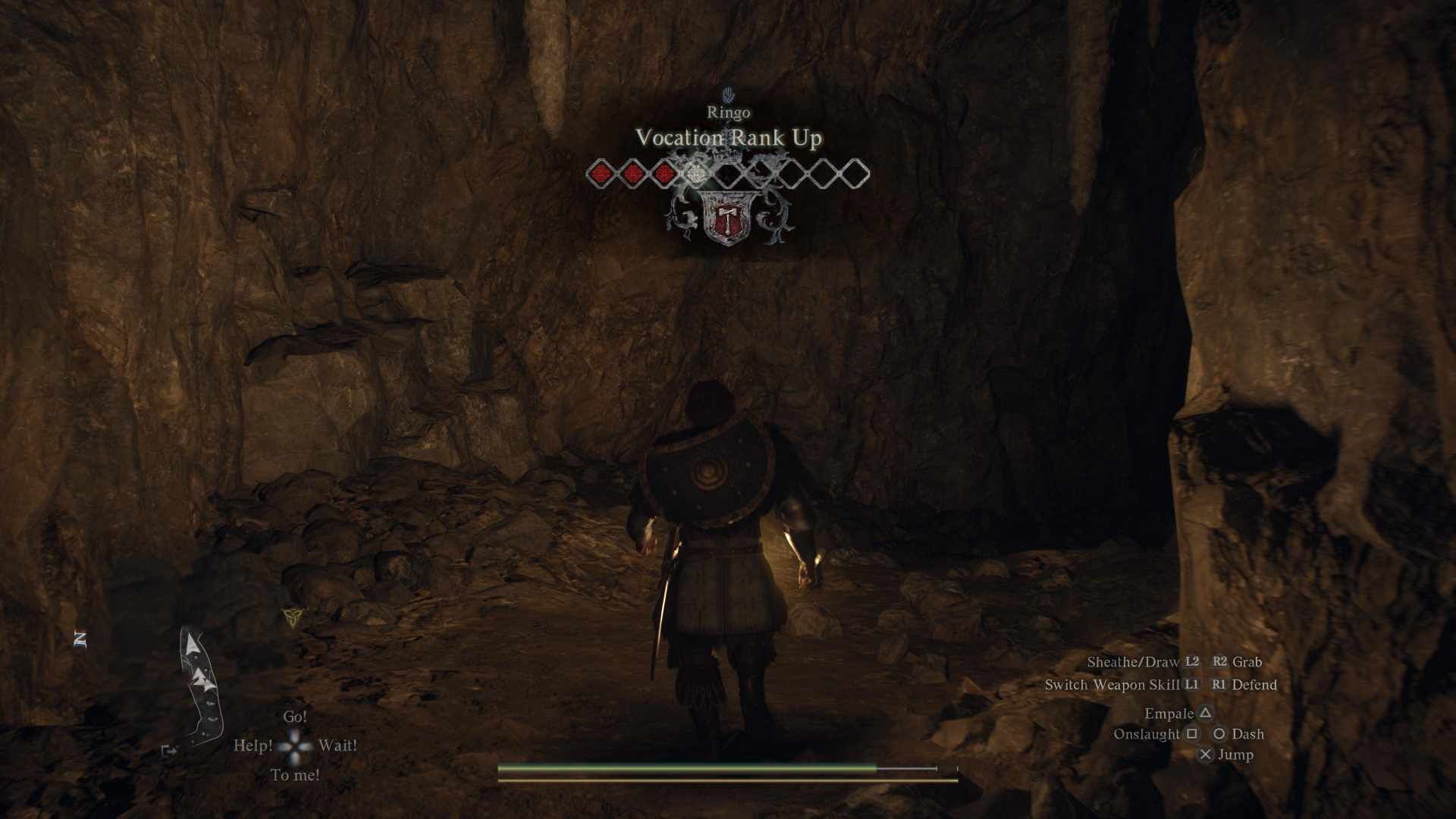
My favorite aspect of Dragon’s Dogma 2, a fortunate carryover from the original game, is the ability to climb up your enemies to target their weak points. For example, as a Fighter, it can be hard to hit a Cyclops’ eye. So, you’ll need to grab on and attempt to climb up it, which itself drains your stamina all while you’re being tossed and slammed into the ground. It’s incredibly exhilarating, especially when the bombastic music kicks in, and makes for an epic experience unlike anything other games in the genre offer.
“Character models for the main story look phenomenal, as do your Arisen and Pawns. However, the general NPCs are inconsistent at best.”
Visually, Dragon’s Dogma 2 is a bit of a mixed bag. For the most part, it is a genuinely striking game, one packed with densely detailed forests smothered in thick foliage, towering ruins, and labyrinthine caves, as well as sweeping deserts filled with dilapidated buildings and creaking machinery. The open world is a sight to behold, from the majestic sunsets washing the world in vibrant pink to watching as the sun filters through the treeline, cracking through at the break of dawn as you hobble through the thickets to relative safety. Simply put, it’s nothing short of breathtaking.
Unfortunately, the same cannot be said of character models and dialogue conversations. The latter is relatively static, rarely even a basic back-and-forth, as you watch as the barely lip-synced NPCs spout archaic nonsense at you. Of course, character models for the main story look phenomenal, as do your Arisen and Pawns. However, the general NPCs, of which, admittedly, there are 1,000 odd, are inconsistent at best, making for a rather disorienting experience.
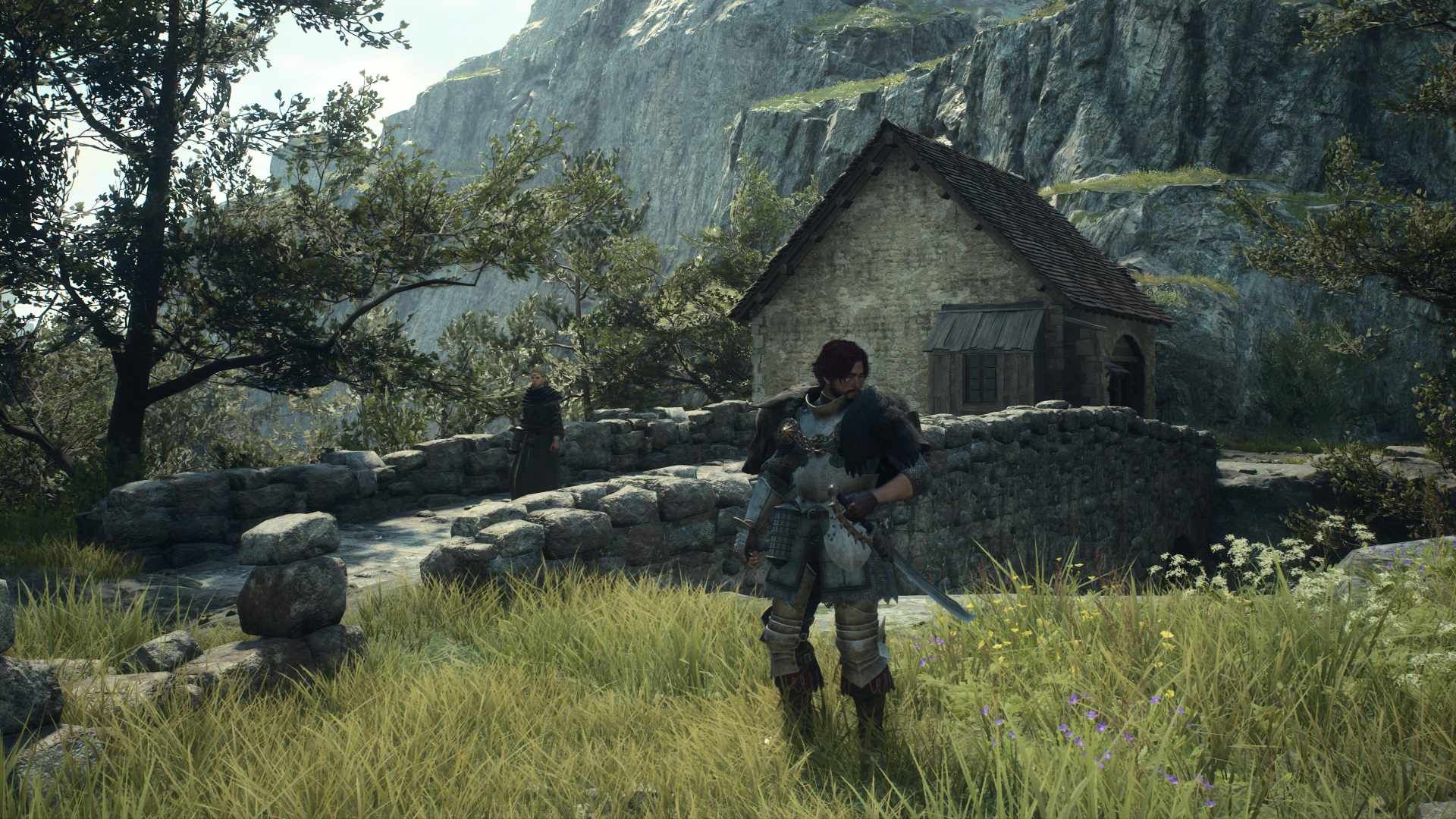
Plenty has been said about the game’s questionable frame rate issues at launch. I am personally rarely bothered by such issues, and as such found my experience with Dragon’s Dogma 2 to be a largely smooth experience. However, I will admit that from time to time, especially when exploring Vernworth, the game stuttered. The worst it got was during combat against a Cyclops inside of Vernworth itself, but even then, the plethora of particle effects from my Pawn’s spells made the dip in frames almost unnoticeable. Nevertheless, if you’re bothered by low frames, then you may want to wait for further updates. Currently, at least at the time of writing, the latest update, while somewhat effective, has not resolved the situation enough for many’s tastes
“Everything from the chirping birds greeting you as the sunrises to the sound of your blade cutting into Troll flesh is incredibly satisfying.”
Fortunately, when it comes to the game’s soundtrack and overall sound design, there’s no question it’s absolutely perfect. While the soundtrack admittedly never reaches the same heights as the original game’s phenomenal theme song, Eternal Return, it’s suitably epic in scope, offering a dynamic mix of bombastic battle themes and more contemplative, upbeat exploration tracks. The particular standouts, outside of the game’s beautiful main theme song, which remains a constant earworm, are Reversal of Fate, the Northern Vermund Wilderness Medley, and, of course, the end credits theme.
Similarly, the sound design, everything from the chirping birds greeting you as the sunrises to the sound of your blade cutting into Troll flesh, is incredibly satisfying. It’s all in an effort to immerse the player as much as possible, and it very much succeeds. Exploring the rich forests of Vermund or the arid deserts of Battahl is made all the more compelling thanks to the phenomenal sound design, and I suspect it wouldn’t be the same without it. My sole gripe lies with the city soundscape, as it never sounds busy enough for my liking. Perhaps a little more noise as I wander the streets of Vernworth would be perfect.
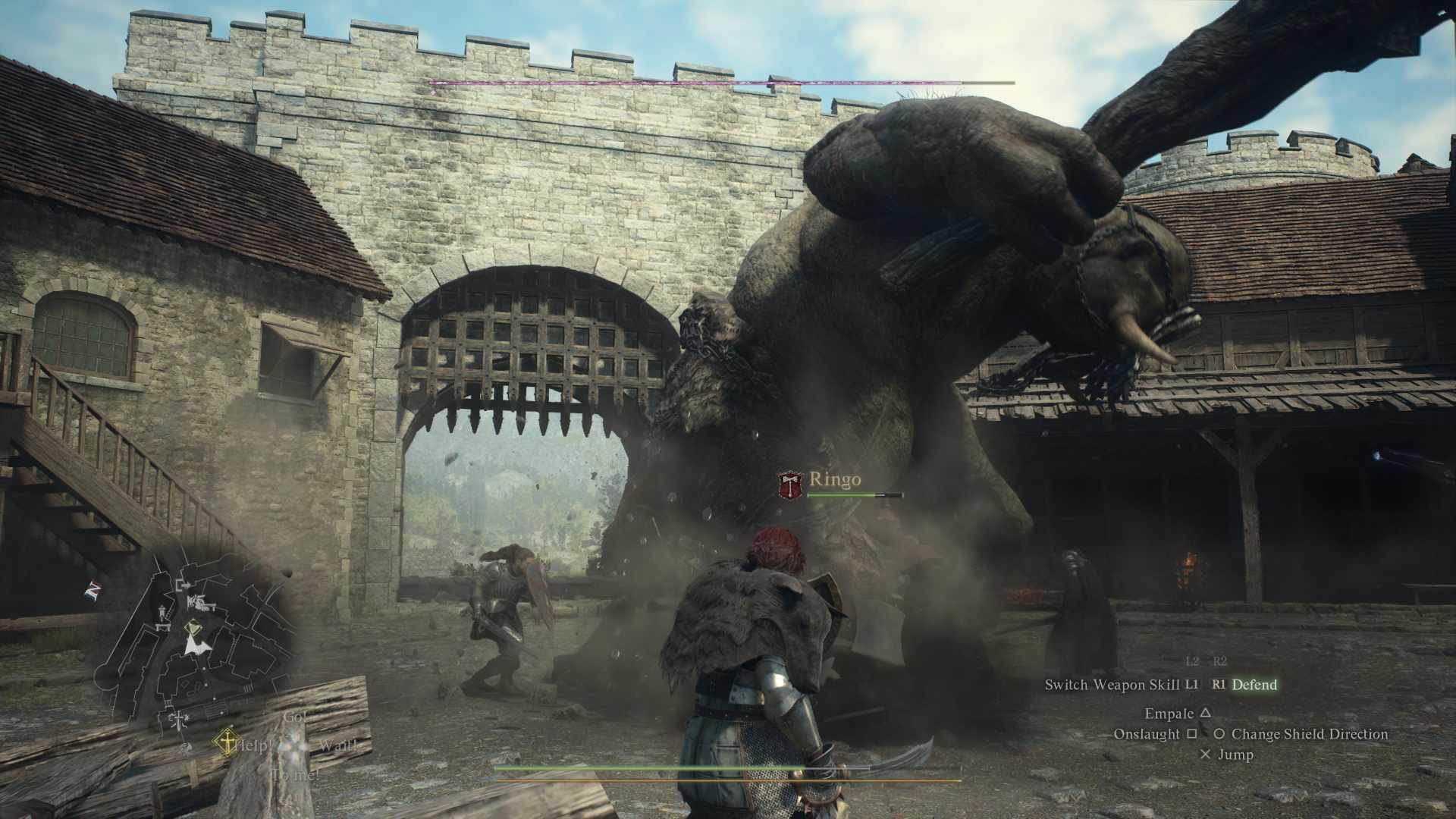
“Dragon’s Dogma 2 is the culmination of everything that the first game attempted to do, only with a far greater budget, bigger ambitions, and the technical know-how to pull it all off.”
Simply put, Dragon’s Dogma 2 is phenomenal. While it isn’t perfect, as its somewhat lackluster narrative and inconsistent visuals let it down, it offers one of the most compelling and engrossing experiences I’ve had in some time. What it lacks in narrative prowess, it makes up for in genre-defining emergent gameplay, the likes of which no other game has come close to.
This is also an especially meaningful game for those who enjoyed the original Dragon’s Dogma. All too often, I find myself wishing I could experience my favorite games for the first time again, to savor and bask in their respective glory. Playing Dragon’s Dogma 2 was, in many ways, that experience, the unparalleled and seemingly impossible ability to play for what feels like the first time, Dragon’s Dogma. It is the culmination of everything that the first game attempted to do, only with a far greater budget, bigger ambitions, and the technical know-how to pull it all off. It’s nothing short of a miracle, a phenomenal achievement from passionate developers who broke new ground with their first iteration and continue to prove that innovation in the open world space is still possible.
It’s hard to come out of Dragon’s Dogma 2 and play anything else. Its audacious goal of pulling off one of the most immersive experiences in video game history is so remarkable and so enviable that few games hold up. Sure, there are a lot of ways that Dragon’s Dogma 2 could improve, and perhaps the third game will bring those innovations. But what we have here is a genuinely awe-inspiring experience, one so beautiful, so spectacular, and so teeming with creativity that, and I will use this in earnest only once, naught can compare.
Disclosure: Game Crater was provided the game for this review.



